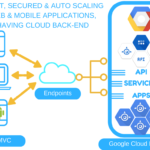5 Common Vendor Risks
A third-party vendor is any individual or company that provides a product or service to your company and is not employed at your company. Examples of third parties are:
- Manufacturers and suppliers, whether this is dry goods, groceries, tools, etc.
- Service providers (cleaners, consultants, advisors)
- Contractors (short and long-term)
- External staff
Why Do You Need to Manage Vendor Risk?
Managing vendor risk should be one of the top priorities of a company because these vendors may have access to confidential and sensitive information, which can prove to be an issue if the vendor has poor security practices. Many companies manage these risks through Third Party Risk Management (TPRM) software.
5 Common Vendor Risks
Though there is a long list of potential risks that can occur from third-party vendors, the following are the five common vendor risks a company may encounter.
Cybersecurity
Cybersecurity is one of the more important aspects of a company, and it is a risk that needs to be taken very seriously. There are times when operational data and confidential information will need to be shared with third parties, and this is where the risk occurs; that data and information are vulnerable to misuse and exploitation when in the hands of someone else. In the present day, the number of cyberattacks, malware, and data breaches from cyber criminals has only increased, and the risk of a cyberattack can affect any industry, from large financial institutions to small community banks. Since many companies have now moved to remote work and have begun to rely on unsecured access to servers and video conferences, this risk has become even more of an issue, and these companies are exposing themselves.
Though your company may have cybersecurity measures in place, when third-party vendors lack those same robust cybersecurity measures, the consequences can affect your business.
Compliance
There is always the risk that a third-party vendor your company is using will violate a law or regulation that you have contractually obligated them to follow. Additionally, there are laws, regulations, and rules passed down by regulatory bodies that vendors are expected to be in compliance with; these are measures that affect your company and industry, or they are your institution’s own internal policies.
Whatever these measures may be, vendors must comply with them. Examples of not complying may be resorting to deceptive marketing practices or the action of violating or encouraging the violation of laws protecting consumer rights. Failures to meet these compliance standards can result in enforcement actions and harsh fines for both the vendor and your organization; the risk of the vendor is the risk of the organization.
Operational
Operational risks are inadequate or failed internal processes, people, and systems. This form of risk can both be internal and external.
Internal vendor operational risks are considered “man-made” because they are created by the processes, actions, decisions, and thinking of people in the third-party organization. An internal operational risk can be due to employee skill levels, process design failures, poor planning, compliance violations, and the use of aging technology.
External vendor operational risks occur outside of the vendor’s control. This can include changing consumer tastes, natural disasters, increased taxes, and inflation.
No matter what form of operational risk the vendor poses, your organization’s operations are intertwined with the third-party vendor’s operations; when they go down, your company will also feel the effects. There needs to be a plan in place in case an event like this happens so that your company can continue to operate in case a vendor shuts down. For example, if one of your vendors is impacted by flooding, you may not be able to continue critical operations.
Financial
Financial risk is the potential negative impact on your company financially due to a vendor relationship. Vendors pose the risk of high costs and lost revenue.
Excessive costs from vendors can lead to excess debt and ultimately hinder company growth. Audit your vendors regularly and make sure their spending is in line with what you have agreed to in your contract.
A loss of revenue costs your organization money. Implement a third-party system that tracks sales activity to monitor them.
Reputation
Reputational risk affects your organization directly. Reputation is the public’s perception of your company, and it is vital to maintain a positive reputation.
However, third-party vendors can harm your company’s reputation by:
- Disclosing confidential customer information
- Violating laws and regulations
- Failing to deliver on products
- Poor customer service
- Drop in quality with service or products
- Inappropriate behavior in the workplace
- Security breaches
All of these can result in the public having a poor outlook on your company.
Benefits of Risk Management
When you are managing the potential risks from vendors, there are benefits that can come forth from it.
- An improvement in the availability of necessary resources.
- A reduction in risks.
- Lower costs.
- Less time and money spent on handling risks.
- The quality of service remains above par.
- Business focuses can remain on its function.
- Accountability
Managing Vendor Risk
This may seem like a lot to take in, but there exists TPRM software that can help your organization manage potential risks. TPRM software can aid in avoiding risks, mitigating them, and helping your company determine whether the potential benefits of an action or pairing outweigh the risk.
Cover Image by Freepik
















